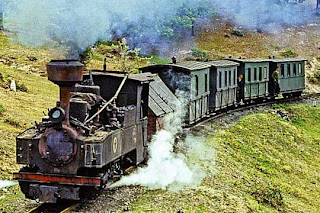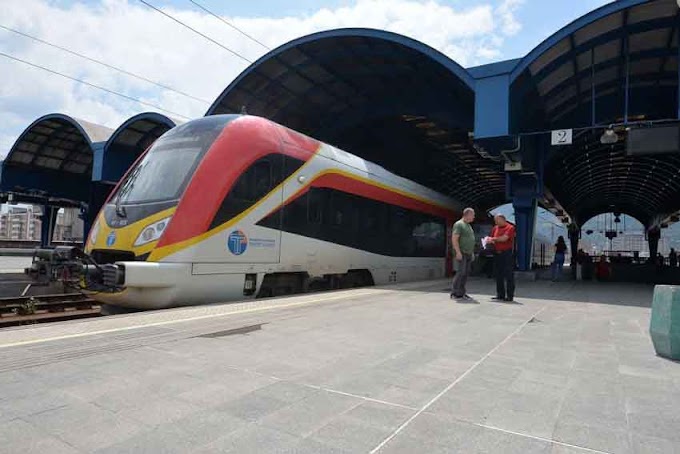Kichevo is a town in the Kichevo basin at an altitude of 625 to 650 meters. It is 112 km from Skopje and 61 km from Ohrid. Trust my word, the first thing I think of when I go to this town under the south-east hills of the Bistra Mountain is the breakfast. I can smell the burek pie, warm from the inside and crunchy on the outside, as I enter my car. Kichevo and its region are famous for the best and the most delicious burek in the Balkan, and the people from Kichevo are the best bakers in Belgrade.
There is a road that connects Kichevo with Demir Hisar and Makedonski Brod and further on with Prilep and is the last station in the railway line in the western part of Macedonia. Today, the railway station looks sad. “Macedonia Railways”, a state company, operates the object and they announced the start of the object’s renovation and restoring its old shine.
“The roof will be renovated, the broken glasses will be replaced, the sanitation will be fully renovated and all that has been damaged over the past period will be restored to its primary condition” – said the head of the Kichevo Railway Station Farija Jusufi.
“Kircho” the little train – a monument of the past
 It hasn’t been always like that. The first railroad was built during WWI from Skopje, through Tetovo, Gostivar and Kichevo, to Ohrid. The little train “Kircho”, which is in the park near the Railway Station today, is a monument to that time. A part of the railroad was later upgraded for the needs of the modern trains and another part (Kichevo-Ohrid) stopped working. I really don’t see the logic there. Kichevo is one of the first towns in Macedonia (after the Skopje-Thessaloniki line) which was connected by railroad in 1878.
It hasn’t been always like that. The first railroad was built during WWI from Skopje, through Tetovo, Gostivar and Kichevo, to Ohrid. The little train “Kircho”, which is in the park near the Railway Station today, is a monument to that time. A part of the railroad was later upgraded for the needs of the modern trains and another part (Kichevo-Ohrid) stopped working. I really don’t see the logic there. Kichevo is one of the first towns in Macedonia (after the Skopje-Thessaloniki line) which was connected by railroad in 1878.
Older people still remember “Kircho”, or “Tea Pot” as they called it because it moved on rails that were narrower than the standard ones. This steam-engine train commuted from Skopje to Ohrid from 1917 until 1967. The route of the train “Kircho” was different to the one used today.
It was a long journey, sometimes taking up to 24 hours to get to Ohrid, and at times the passengers had to push the train on the hills or help get it back on the tracks.
Even books have been written about “Kircho” the train. It is part of the collective memory of the people from western Macedonia. Today, “Kircho” is proudly standing at the Railway Station in Kichevo. It deserved that honour. Unfortunately, many people pass him by without even noticing it.
And they could stop, take a look, climb aboard the three wagons and take photos. “Kircho” could be a real tourist attraction if its story was told in the tourist maps and guides of Macedonia.
King Marko was going to Kichevo
After having a burek near “Kircho” and walking down memory lane at the wooden benches in the movie setting of the wagons, I go to the green market in Kichevo. That is a special experience and you can find everything there.
For years, people from Skopje are coming to the green market in Kichevo. I have met them many times in the train, which I take whenever possible. That way, you can see Macedonia’s natural beauties because the railroad goes where the road doesn’t.
During the mid-century the town was mentioned as Kicavis, Kitsavin or Kitchavin (Kichavin), Kicavin and Kicaveos. The name Krchovo was mentioned in a screed by Sultan Selim III from 1798. The name Kichava was also used. The folk legends explain today’s name differently.
 Near the present town of Kichevo there was an ancient town called Uskana. This settlement was first mentioned during the reign of the ancient Macedonian king Perseus.
Near the present town of Kichevo there was an ancient town called Uskana. This settlement was first mentioned during the reign of the ancient Macedonian king Perseus.
The kale in Kichevo, also known as Kitin’s kale, rises in the Kichevo basin and is visible from almost every point from the basin. It is the centre of the town of Kichevo at the same time. Currently, it is a park (in a pretty bad shape) with a memorial ossuary. There are at least 5 or 6 towers visible. The length of the walls is about 440 meters over 1.5 hectares. The western tower is the most striking one because of its preservation and massiveness.
Unfortunately, the others are in desperate shape. Machinery was used during the arrangement of the area half a century ago and a part of this archaeological site was irreversibly wiped out and destroyed. Today, it can be barely seen, so it is no wonder that some don’t know it even existed. Finely carved marble posts were accidentally found on the ground of Kitin’s kale, which point to the existence of a church.
On the fortress’s peak there was a castle where the manager of the fortress and the area lived. There was an old rain water tank at the present aqueduct. Legends also speak about an underground tunnel that was used as an escape route, which ended at the region of Chuka. There is a cave under the kale which hasn’t been explored.
In the travelogue of Englishman Edmund Spencer from 1850 it says that Kichevo was the place where the town of “Skirtiana” used to be. However, according to others it hasn’t been confirmed.
Free Macedonia was born in Kichevo
After contacting the fortune seekers from the villages near Kichevo, Pere Toshev, along with Joseph, the deacon from the St Mary monastery, formed the first armed squad in 1878 led by Duko Tasev, where Jordan Piperkata was also a member. They would lead the famous Brsjak rebellion in 1880.
On 2nd August 1903, an uprising led by Arso the duke and Jordan Piperkata started, and the freed territories were held until 9th August, when the rebellion was stopped.
In 1907, probably as Christianity grew stronger, the church of Saints Peter and Paul was restored over the grounds of an older church. The old ancient road, which is now the central town street, was paved with cobblestone, which exists to this day.
On 15th December 1941 the first party organization was formed in the village of Karbunica. In October 1941 Kuzman Josifovski – Pitu formed the local committee of the Communist Party.
Kichevo, along with Debarca, was the first liberated town during WWII, in 1943. People’s authority, where representatives of all nationalities that lived in the town participated was established in the monastery of St Mary.
 One curiosity is that the ballistic leaders were forgiven the cooperation with the Italian and German fascists and they were even entrusted with guarding the border with fascist Bulgaria at the time, in the region of Bigor Dolenci. The loyalty of these units was short-lived. Less than a month later, a massive German attack began from Gostivar towards the free territory, which was defended at the Bukovik Mountain by the outnumbered, but highly motivated squad led by Mirko Mileski, which was defeated.
One curiosity is that the ballistic leaders were forgiven the cooperation with the Italian and German fascists and they were even entrusted with guarding the border with fascist Bulgaria at the time, in the region of Bigor Dolenci. The loyalty of these units was short-lived. Less than a month later, a massive German attack began from Gostivar towards the free territory, which was defended at the Bukovik Mountain by the outnumbered, but highly motivated squad led by Mirko Mileski, which was defeated.
Here, in Kichevo, is where the free Macedonia was born; a country of equal and liberal people. That is why the National Institution – The Museum “Western Macedonia in the Liberation War” is located here. The fact that the Headquarters of the Liberation army of Macedonia was located in the present building during WWII is of great importance.
The constant exhibition depicts the battle for freedom of the Macedonian people during XIX and XX century. A larger part of the Museum is dedicated to the frescos and mosaics. There is also an ethnological collection of folk costumes from the Kichevo region from the XIX century, furniture and textile.
Come to Kichevo and visit the archaeological site Djuma Mosque or the Sultan Bayasit Mosque. The site is a medieval object. During the building of the fountain in the mosque’s yard, fragments from ceramic pots, roofing tiles and other construction material were found, which leads to the presumption that there was a medieval object in its proximity.







